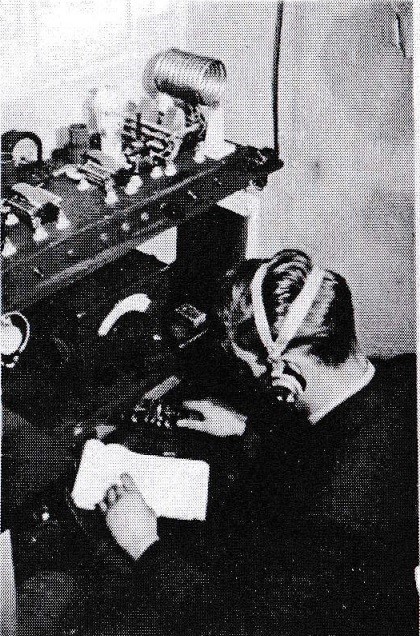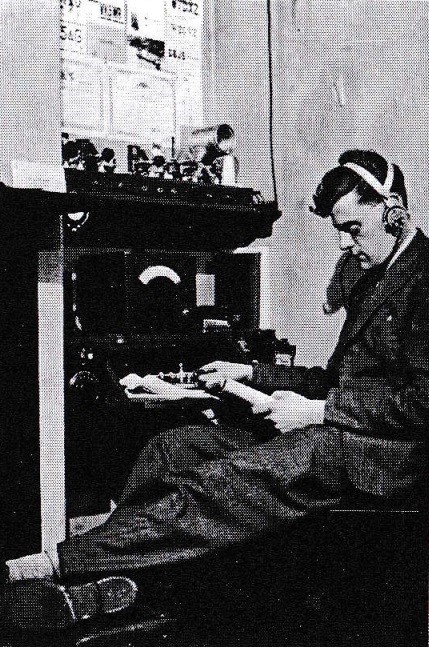In Memoriam, G2HW, RSGB Member 79 Years
Harry Whalley, MSc, MIET, G2HW 30 June 1914 to t4 May 2012
Harry grew up in Darwin, Lancashire and he showed an early interest in things mechanical, particularly the steam engines which he saw in local mills. He spent some of his school holidays as an unpaid assistant engineer in one of them. Harry thought of becoming an engineer in the Merchant Navy, but his father felt that he should become "properly qualified”, so he supported his son to do a degree in Mechanical Engineering at the University of Manchester, travelling daily by train. With the very high unemployment of that time, Harry could find no job, so he obtained a bursary (of £30) that covered the fees for the 1 year MSc course on internal combustion engine exhaust systems before starting a 2 year College Apprenticeship at the Metropolitan Vickers Electrical Co (MV) in Manchester.
His first involvement with radio occurred when his father bought a kit for Harry to build a Cossor Melody Maker 3 valve broadcast receiver; it was the family wireless set for many years. He subsequently made several short wave receivers in his early teens and became keenly interested in amateur radio after meeting a local licensed amateur. Harry obtained an Artificial Aerial licence in i934 while still a minor; he learned Morse code and applied for a full transmitting licence in 1935, being given his call, G2HW. With his home-made transmitter, an Eddystone receiver and a simple but well-matched wire aerial he made contact with all US states and many other countries around the world, including Australia, before WW2 caused licences to be rescinded.
In 1938, towards the end of his apprenticeship at MV, Harry heard of a vacancy in the Research Department Radio Laboratory. applied for it and was accepted because of his amateur radio knowledge, experience and enthusiasm. His first job was running up and testing high power radio valves for use in 30 to 40MHz transmitters that had a peak pulse power of - 1 MW, which MV built for the early radar system around the UK coast. After that probationary period he worked throughout the War developing radar gear for the RAF, Army and Navy.
Harry and I first met in December 1950 when I was a 21 year old college apprentice and Harry was a section leader in the Research Department Radio Lab, and a Member of the institute of Radio Engineers. We were approaching each other in a corridor of the Department and it was a case of snap! as we spotted each other's RSGB badge; it started a conversation and a good friendship that lasted for 61 years. Harry's section worked mainly on high power radio and electronic projects including the RF section of the BBC TV transmitter installed at Sutton Coldfield; it was the 2nd TV station in the UK, Alexandra Palace being the only other. He subsequently worked on equipment for the Synchrotron Radiation Laboratory, “Desy” at Hamburg, and he was an expert on the design of high power pulse-transformers, and on transformers in general.
Harry took up amateur radio again in 1946 when Incenses were reissued. He operated from Stretford and Darwen and became well known on the 160m band in the Manchester area for his lead in technical discussions, responding to questions posed by many amateurs with much less expertise/ knowledge than he had. He was a great exponent of explaining solutions to problems from first principles, and was very generous with his time and advice to those who asked for help. His 1950s Bulletin article on the design of pi networks for matching valve RF power amplifiers to 50 or 70 ohm loads remained a standard reference for many years.
On retirement he resumed his amateur radio activities. First with an ex-WW2 Spy Set (a B2) using Morse code with the semi-automatic key that he had made in 1936. Subsequently he used a commercial all mode transceiver together with a well-matched wire aerial, working stations worldwide in Morse code, and he was quite often to be heard leading technical discussions on local ssb nets
He was an active member of the South Manchester Radio Club in many years, and was a much sought after lecturer by clubs in the region, with wide ranging knowledge and a phenomenal memory until a stroke damaged it in March 2012. He will be greatly missed by all who were fortunate enough to have shared his company.
Harry was asked if he would permit SMRC to use his callsign after he had no further use for it.
Harry with his usual generosity agreed to that of course. See GX2HW
Alan Errock G3HCO


 South Manchester Radio and Computing Club
South Manchester Radio and Computing Club